= Rebutia krainziana cv. inermis
(monstruosa)
Accepted Scientific Name: Rebutia krainziana

Rebutia krainziana f. monstruosa (Rebutia krainziana cv. inermis) Photo by: Valentino Vallicelli
Origin and Habitat: Garden origin (Nursery produced cultivar)
Synonyms:
Description: Clumping globular cactus, up to 5 cm in diameter, and up to 7 cm tall. It can slowly form clumps. The specially notable characteristics of this cactus is its green naked stem that will turn a lovely purple tinge in full sun.
But the most peculiar trait of this plant are the vestigial leaves subtending the small areoles on each tubercle. This is an ancestral trait not manifested in the normal plant. This trait is revealed thanks to a mutation that permits this odd cultivar to show the characteristic of bearing leaves, reminding us of an ancient era when its cacti ancestors were normal leafed plants.
Stem: Up to 5 cm, globose, dark green, that begins to offset in about its third or fourth year, eventually making a moderately tight clump, with the individual stems standing out a little on their own.
Tubercles: In two downward spirals in ratio 8:13.
Leaves: A small green scale-like leaf subtends each areole at the tubercles tip.
Spines: Usually absent or very few small, snow-white, very thin, very short and soft, irregularly scattered on the plant stems..
Flowers: Bright red, up to 3.5 cm wide, developing from the base or at the tip of each head, resulting in a superb display.
Blooming season: It is usually one of the earliest rebutia's to bloom in spring.
Subspecies, varieties, forms and cultivars of plants belonging to the Rebutia marsoneri group
 Rebutia krainziana Kesselr.: Small cactus with dark stem colour, emphasized by the small, white areoles, and its large orange-red flowers, (but also available in shades from dark red, to orange, yellow or white) reminding those of daisies.
Rebutia krainziana Kesselr.: Small cactus with dark stem colour, emphasized by the small, white areoles, and its large orange-red flowers, (but also available in shades from dark red, to orange, yellow or white) reminding those of daisies. Rebutia krainziana var. albiflora hort.: Plant with pure white flowers, and very thin, very short, snow-white spines set against the dark green body.
Rebutia krainziana var. albiflora hort.: Plant with pure white flowers, and very thin, very short, snow-white spines set against the dark green body. Rebutia krainziana cv. brevispina: is a mutant cultivar with very sort spines and the vestigial leaves in the new growth.
Rebutia krainziana cv. brevispina: is a mutant cultivar with very sort spines and the vestigial leaves in the new growth. Rebutia krainziana cv. inermis: The specially notable characteristics of this cactus is its green naked (spine-less) stem that will turn a lovely purple tinge in full sun.
Rebutia krainziana cv. inermis: The specially notable characteristics of this cactus is its green naked (spine-less) stem that will turn a lovely purple tinge in full sun. Rebutia krainziana cv. Inermis Cristata: Unusual crested form with smother shining green epidermis and mauve tones if exposed to sun.
Rebutia krainziana cv. Inermis Cristata: Unusual crested form with smother shining green epidermis and mauve tones if exposed to sun. Rebutia marsoneri Werderm.: Plants usually solitary, depressed globose, with golden yellow to orange flower in spring.
Rebutia marsoneri Werderm.: Plants usually solitary, depressed globose, with golden yellow to orange flower in spring.
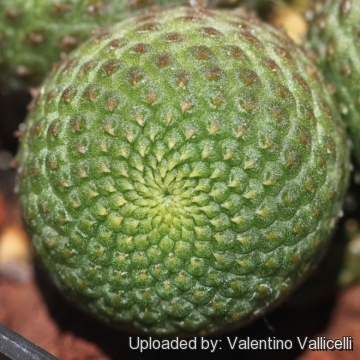 Rebutia krainziana f. monstruosa (Rebutia krainziana cv. inermis) Photo by: Valentino Vallicelli
Rebutia krainziana f. monstruosa (Rebutia krainziana cv. inermis) Photo by: Valentino Vallicelli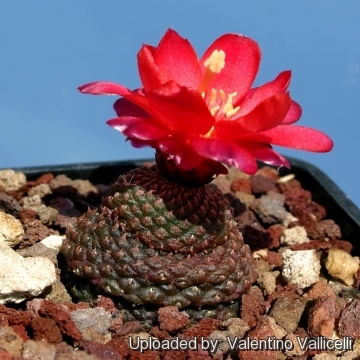 Rebutia krainziana f. monstruosa (Rebutia krainziana cv. inermis) Photo by: Valentino Vallicelli
Rebutia krainziana f. monstruosa (Rebutia krainziana cv. inermis) Photo by: Valentino Vallicelli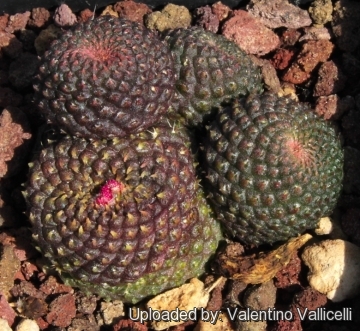 - With sun exposures plants take a very dark-purple tinge, and may also produce a scattered group of bristly spines. (Rebutia krainziana cv. inermis) Photo by: Valentino Vallicelli
- With sun exposures plants take a very dark-purple tinge, and may also produce a scattered group of bristly spines. (Rebutia krainziana cv. inermis) Photo by: Valentino Vallicelli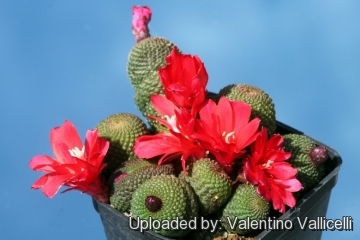 Rebutia krainziana f. monstruosa (Rebutia krainziana cv. inermis) Photo by: Valentino Vallicelli
Rebutia krainziana f. monstruosa (Rebutia krainziana cv. inermis) Photo by: Valentino Vallicelli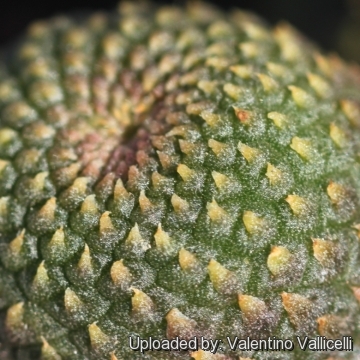 Rebutia krainziana f. monstruosa (Rebutia krainziana cv. inermis) Photo by: Valentino Vallicelli
Rebutia krainziana f. monstruosa (Rebutia krainziana cv. inermis) Photo by: Valentino Vallicelli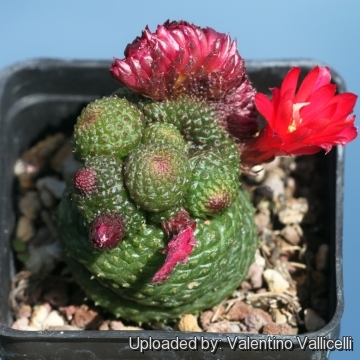 Rebutia krainziana f. monstruosa (Rebutia krainziana cv. inermis) Photo by: Valentino Vallicelli
Rebutia krainziana f. monstruosa (Rebutia krainziana cv. inermis) Photo by: Valentino Vallicelli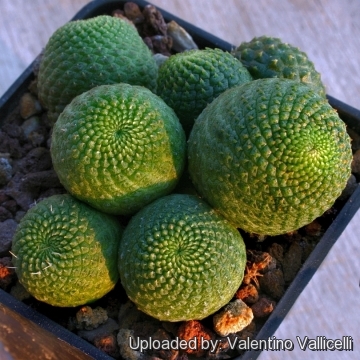 Rebutia krainziana f. monstruosa (Rebutia krainziana cv. inermis) Photo by: Valentino Vallicelli
Rebutia krainziana f. monstruosa (Rebutia krainziana cv. inermis) Photo by: Valentino Vallicelli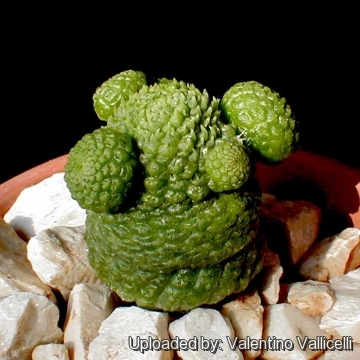 Rebutia krainziana f. monstruosa (Rebutia krainziana cv. inermis) Photo by: Valentino Vallicelli
Rebutia krainziana f. monstruosa (Rebutia krainziana cv. inermis) Photo by: Valentino VallicelliCultivation and Propagation: Full sun to light shade. Water regularly in summer but do not over-water. Keep dry in winter.
Hardy to -4°C.
It is better that they be repotted regularly. Repotting is best done at the end of winter, but can be done at other times, too. Repotting every two or three years will suffice. Do not water for a couple of weeks after repotting, to reduce risk of root rot via broken roots. The size of stems will increase the number of flowers produced.
Propagation: By grafting or offsets.
Your Photos

by Valentino Vallicelli

by Valentino Vallicelli

by Valentino Vallicelli

by Valentino Vallicelli

by Valentino Vallicelli























